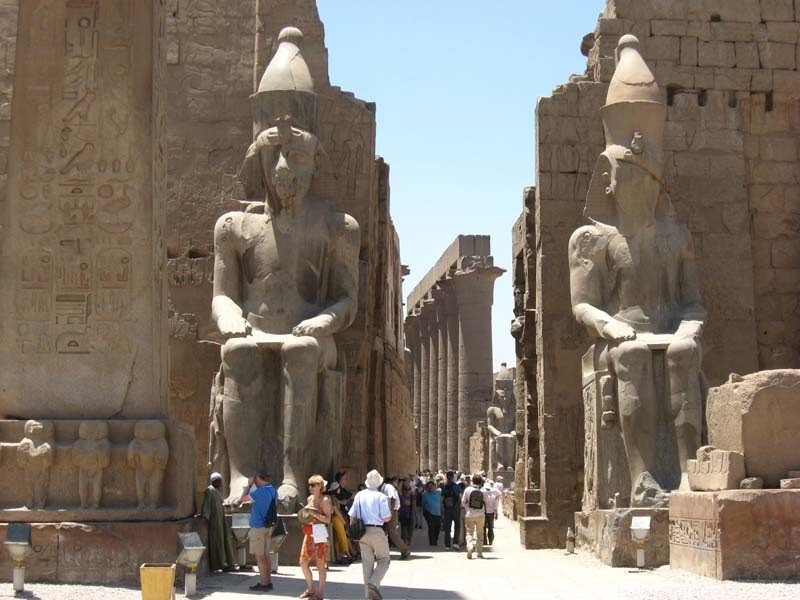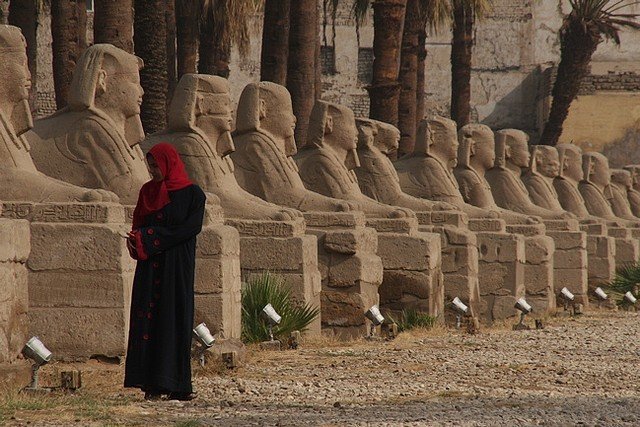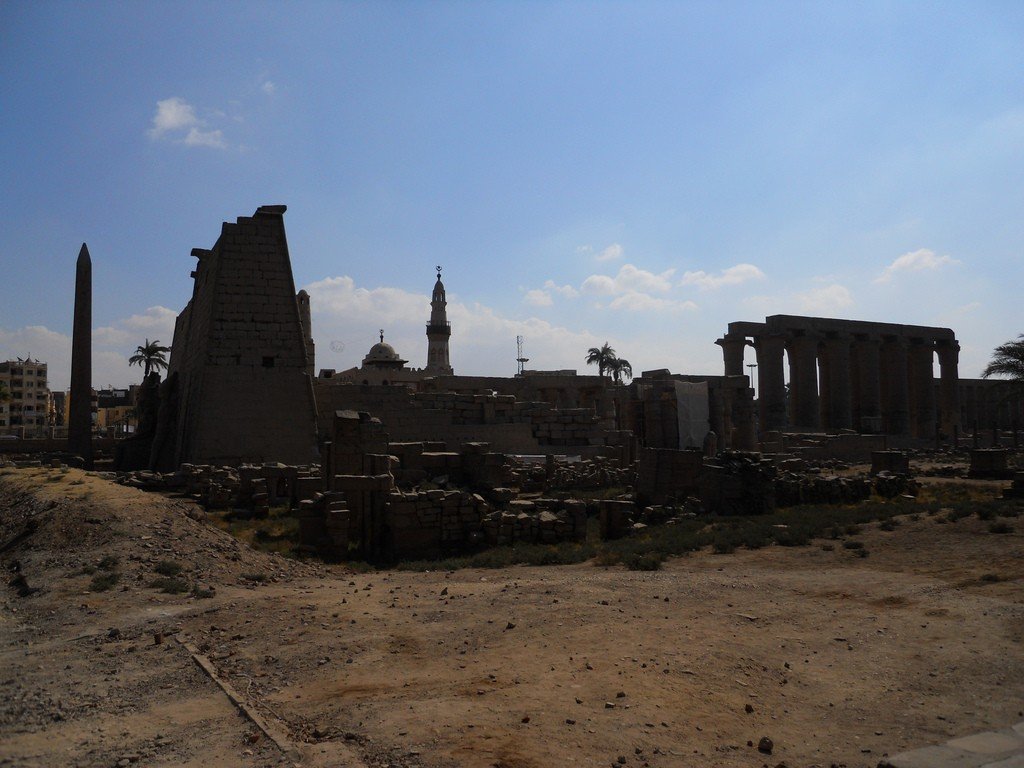Luxor Temple of Amon-Ra
In the center of Luxor near the Nile stands the Luxor Temple (6.00-21.00, in summer until 22.00), mostly built by Amenhotep III during the 18th dynasty and decorated by Ramses II of the 19th dynasty.










General information
The temple was the home of Amon-Ra’s wife, the mother goddess Mut, and their son, the moon god Khonsu. Amon-Ra dwelt in Karnak, but during the festival of Opet (New Year) his statue was brought here to be reunited with his family.
.
Before entering the temple, admire the magnificent 4th century BC avenue of ram-headed sphinxes that connects the Karnak temple to the north. Opposite the huge temple pylon (entrance) are majestic statues of Ramses II and a large granite obelisk, one of the original two. The other, given to France in 1831 by Mohammed Ali, stands in the Place de la Concorde in Paris.
.As you enter the Great Court of Ramses II, you will see the Abu al-Hag-gag Mosque (Abu al-Hag-gag) on the roof of the hall, protecting the tomb of the 12th century saint.The mosque and tomb were part of a small city built over a temple buried in the sands. The mosque can be entered through a door in the eastern wall above the temple.
The western wall depicts a procession going from Karnak to the Luxor Temple, while the better preserved eastern wall depicts the return route. This route leads to the Sun Court of Amenhotep III, where a treasure trove of statues, now on display in the Luxor Museum, was discovered in 1989. Stone carvings on the wall depict Amenhotep offering gifts to the gods in gratitude for his divine authority.
.